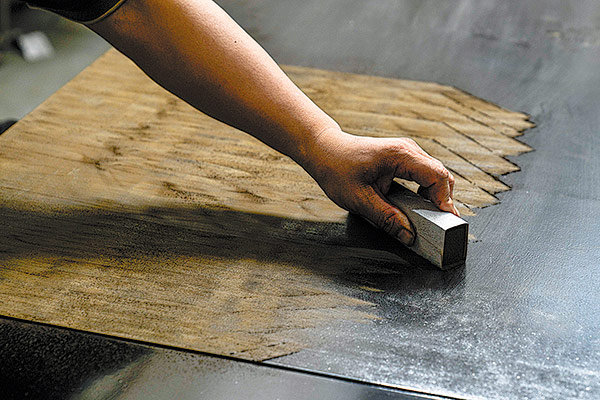

New blood
In addition to furthering his own skills, Xue has started passing down his technical know-how to younger generations.
"Young people need to be passionate and persistent to understand the essence of lacquer art," he says.
Xue has groomed more than 200 apprentices, including his two sons.
"My father works with his apprentices for some five hours a day at the workshop," says Xue Xiaodong, one of his sons.
Xue Xiaodong has adhered to his father's commitment to natural lacquer and draws inspiration from traditional culture.
"It is important for us to know about ancient attire, literature and opera to make good lacquerware," he says.
Xue Xiaodong, on the other hand, has developed his own understanding of the craftsmanship. "It is imperative to integrate modern concepts, as aesthetic standards are constantly evolving, and creators need to study them to appeal to younger generations," he says.
In 2011, the Xue family founded a lacquer art research institute, where enthusiasts can learn the nitty-gritty of techniques. While traditional lacquerware highlights classic tales or auspicious patterns, younger artists like Xue Xiaodong strive to keep the art modern and simple.